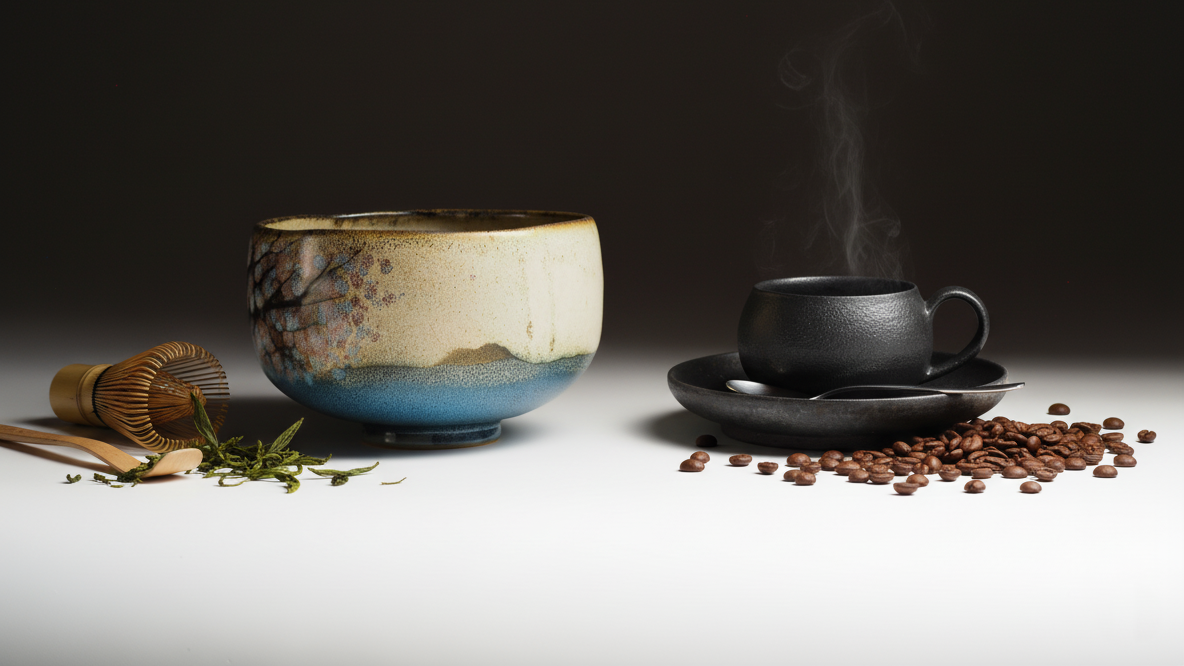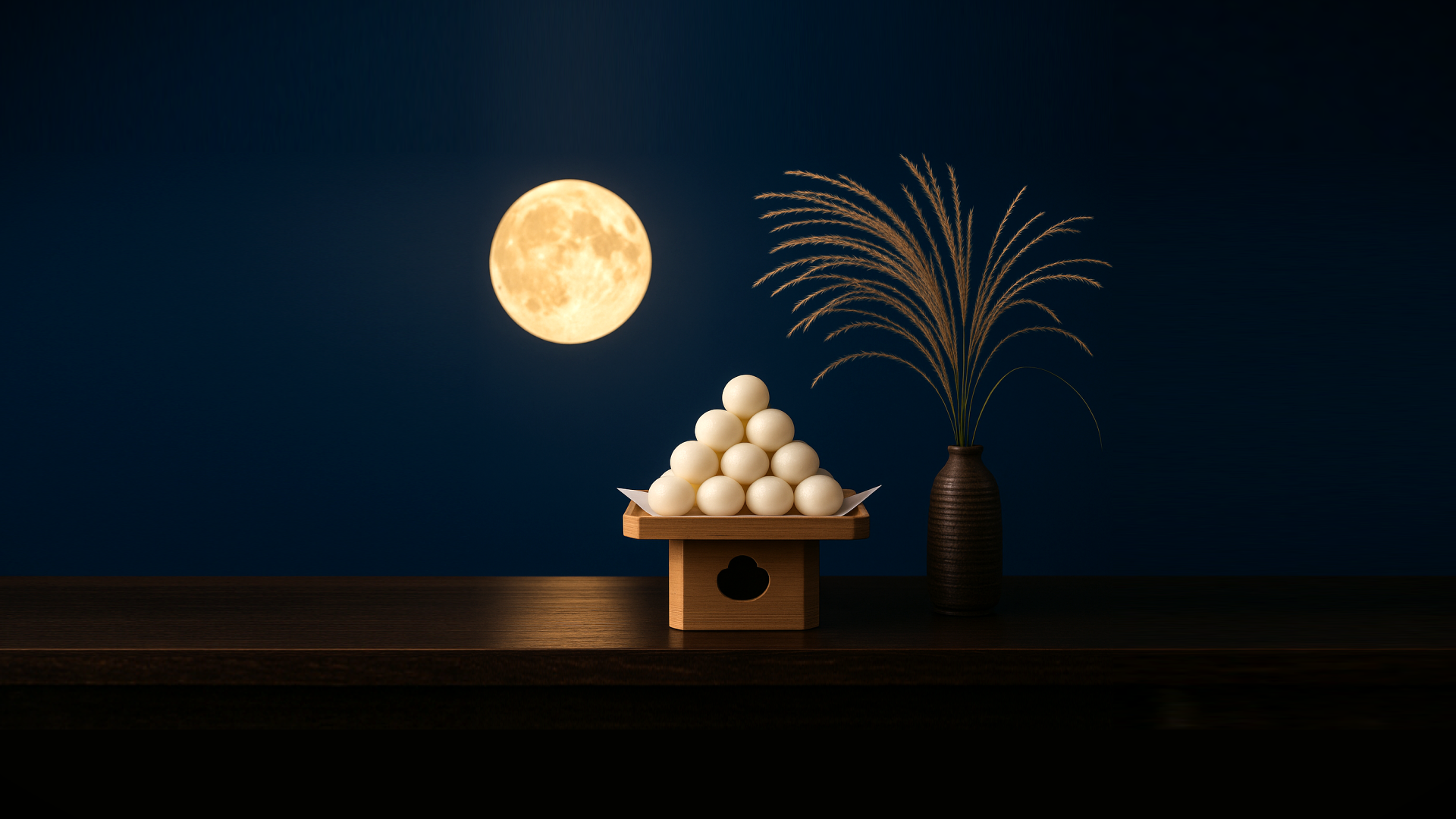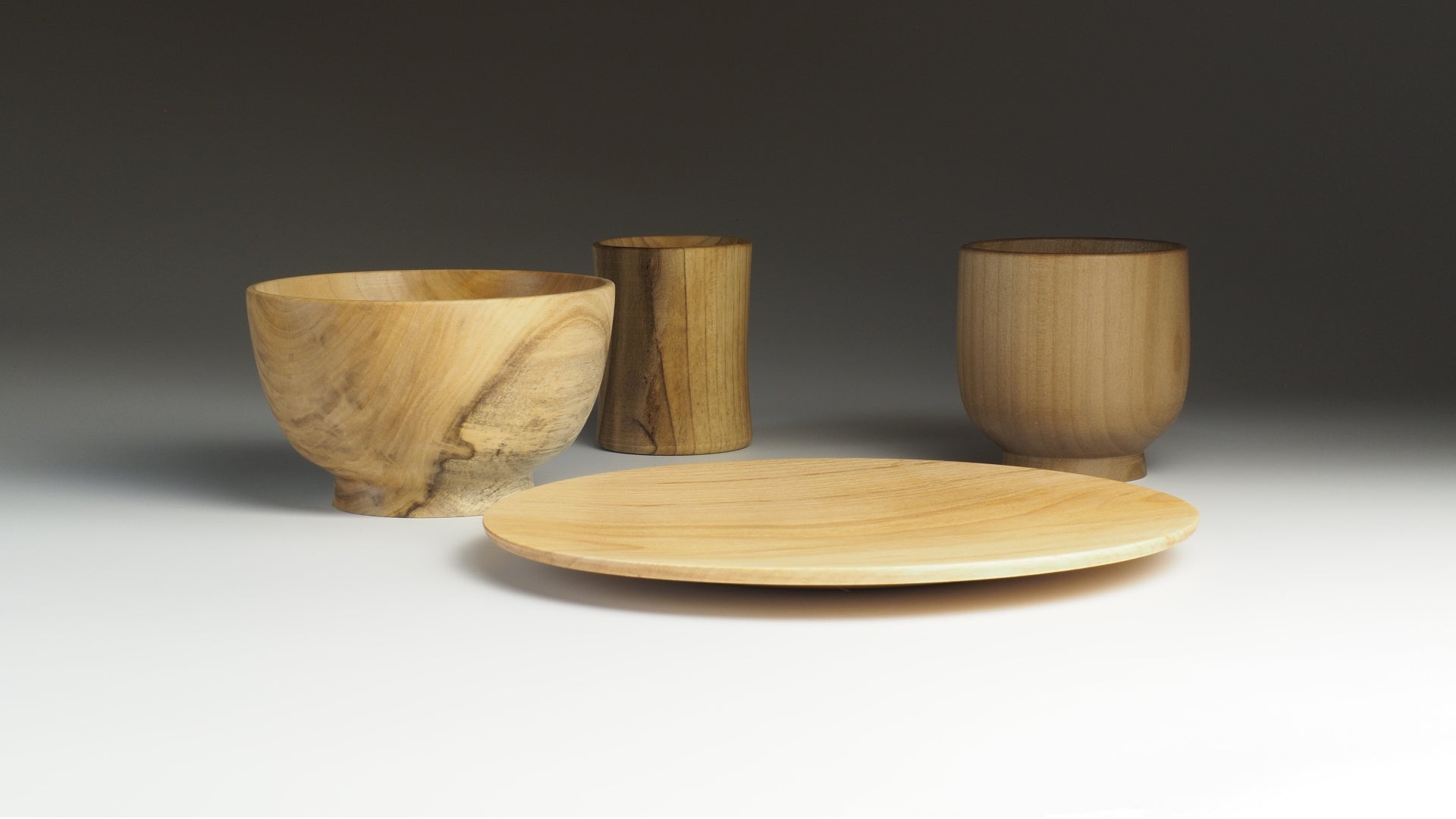
Japanese Ceramics: From Matcha Bowls to Coffee Cups
For centuries, Japanese ceramics have been closely tied to the practice of drinking tea. Through elegant matcha bowls or humbler yunomi cups, artisans expressed their craft in unique forms.
Then, when coffee reached Japan in the 1700s, this tradition adapted by making coffee cups and mugs a natural extension of the ceramic tradition while preserving beauty and meaning.
From Yunomi to Japanese Coffee Mug
If you hold a modern Japanese coffee mug, you'll notice that it showcases the same quality and attention to detail as its more "traditional" teacup counterparts.
Let’s explore how Japanese ceramics have evolved with changing habits while preserving cultural depth and adapting to new trends.

Why Ceramics Are Central to Japanese Culture
First and foremost, it is important to note that in Japan, the ceramic field is taken seriously. Especially in the tea world, ceramics are more than simple containers; they embody values of hospitality, aesthetics, and connection with nature. Considering that (at least in the artisanal world) kilns are often family-owned, the crafting skills and heritage are passed down through generations, leaving in every creation a long tradition of refinement in both function and design.
Whether it is a matcha bowl with its uneven wabisabi lines or a yunomi teacup to savor hojicha, these objects define how drinks are experienced... and this is not a euphemism.
The tactile surface of pottery, the warmth it retains, and the subtle yet intended imperfections make each vessel something unique to drink from.
In Japan, this has been the case for centuries, not only when serving tea but also in framing moments of reflection (think about sake during moon-viewing), turning the act of drinking into an encounter with beauty.
The Role of Matchawan and Yunomi in Japanese Tea
The experience of tea in Japan has always been inseparable from the vessel.
A chawan, or more precisely in this case a matchawan (抹茶碗), was central to the tea ceremony (茶の湯, chanoyu), which became a living stage for wabi-sabi aesthetics and ceramic production in the late 16th century during the Momoyama Period.
Its wide form was designed for whisking matcha (抹茶, powdered tea) and for being held in both hands, encouraging presence and reflection. Even today, the matchawan remains a vessel mainly used in the tea ceremony.

Left: Matcha bowl by Raku Ichinyū, late 17th century. The Met Museum
Right: Yunomi featuring gold lacquer repairs 17th or 19th century. Smithsonian Museum
With the rise of sencha (煎茶, steeped green tea) in the 18th century, the yunomi (湯呑み) emerged as the humble yet essential Japanese teacup.
Taller and simpler than the ceremonial bowl, it was meant for daily tea consumption. Even if the yunomi was never intended for the formality of the tea ceremony, in most cases it still reflects the artistry of the maker, resulting in pieces of great beauty.
Some yunomi are also crafted with a small thumb recess, showing deep attention to ergonomics, design, and usability, so the cup not only looked beautiful but also felt natural in the palm.
The matchawan and yunomi remained the main vessels for tea and hot beverage consumption throughout the Edo period, evolving in styles and regional variations.
However, the Meiji Restoration of 1868 fueled a profound transformation, and as Japan rapidly modernized, Western-style eating and drinking habits, including the popularization of coffee, were adopted.
The First Japanese Ceramic Coffee Cups
The arrival of coffee in Japan opened an unexpected chapter in the story of ceramics. What began as an exotic curiosity brought by foreign traders soon inspired artisans to create new vessels, blending Western influences with deeply rooted Japanese aesthetics.
This encounter gave birth to the first ceramic coffee cups, pieces that connected tradition with innovation.
From Dejima to Arita, Kyoto, and Seto
Coffee was first introduced to Japan in the early 1700s, during the Edo period (1603–1868), when the country lived under the Tokugawa shogunate’s policy of sakoku (鎖国, “closed country”).
Foreign trade was tightly restricted, and the Dutch (confined to the small island of Dejima in Nagasaki) were the only Europeans allowed to trade.
At first, coffee was little more than a curiosity, but it soon caught the eye of Japanese artisans.
Workshops in major ceramic centers such as Kyoto, Arita (有田), and Seto (瀬戸) began experimenting with kōhī kappu (コーヒーカップ, coffee cups) and saucers.
Early examples were modeled on imported Western porcelain, yet before long they carried the same depth of surface, glaze, and form that had long defined tea wares.
For example, in the town of Arita (Japan’s first porcelain center since the 17th century, located on the southern Japanese island of Kyushu), artisans blended local traditions such as Imari (伊万里焼) and Kakiemon (柿右衛門) with Western-style shapes, producing pieces for both domestic use and export.
Seto, one of the Six Ancient Kilns, was already famous for innovation in glazes and decoration, making the transition to coffee cups a natural step.
Kyoto’s kilns added their own refinement, adjusting proportions with the same elegance they had long applied to tea vessels.
The “Nippon” Era of Exports
These early ceramic coffee cups were not just practical objects as they became bridges between East and West, keeping Japanese ceramic traditions alive while welcoming new tastes.
As exports expanded after the Meiji Restoration, pieces marked “Nippon” or “Japan” reached tables around the world, and the Japanese coffee cup, among other exquisite pieces, earned a place in global dining culture.
Between 1891 and 1921, U.S. import laws required Japanese porcelain to carry the word “Nippon,” and many of these cups and saucers, along with other ceramic pieces, were made with Western buyers in mind. (Source: The Nippon Club Web Gallery.)
Workshops tied to centers like Arita and companies such as Noritake created finely decorated pieces that blended Japanese techniques with forms familiar to American households.

Noritake teacup. Collection of the Smithsonian National Museum of African American History and Culture, Gift of Portsmouth Black Heritage Trail, Inc.
Over time, the “Nippon” backstamp itself became a hallmark of quality, and today collectors in the U.S. still seek out these early ceramic pieces, which stand as reminders of how Japanese artistry shaped the modern table abroad.

Selection of Nippon porcelain backstamps, showcasing various marks used on Japanese export ceramics. Courtesy of the International Nippon Collectors Club.
This ongoing fascination continues through the work of the International Nippon Collectors Club (INCC), a community dedicated to the appreciation and study of Nippon porcelain focusing on Japanese export wares produced between 1890 and 1921.
Through their research and curated collections, the INCC preserves the legacy of this remarkable era, helping modern audiences understand how these ceramics bridged cultures and introduced Japanese craftsmanship to the Western world.
Kissaten and the Refinement of Coffee
In the 20th century, the rise of the kissaten (喫茶店, traditional Japanese coffee houses) spread coffee culture across Japan.
These cafés encouraged artisans to create refined cups and mugs not only for export but also for a growing domestic audience.
It is worth to mention that, in some kissaten, coffee is brewed with near-ceremonial care; drip, siphon, and pour-over methods that elevate the drink itself and naturally demand cups worthy of the experience.
This culture reinforced the perception of the ceramic coffee cup as not just a vessel, but as an essential part of the experience, linking Japan’s ceramic heritage with modern café life.
Materials and Aesthetics in Japanese Coffee Cups
Beyond history, what truly defines the Japanese coffee cup is the material and the aesthetic sensibility behind it.
From refined porcelain to earthy pottery and the influence of wabi-sabi, every detail connects the vessel to centuries of ceramic tradition while adapting it to a modern drink (at least for Japan).
Clay, Porcelain, and Regional Styles
Regional differences in materials and techniques have always shaped Japanese ceramics.
In Arita, porcelain enabled thin, luminous walls often decorated with vibrant designs and colorful overglaze painting.
By contrast, Seto became known for its innovative pottery glazes, from ash greens to iron browns, which gave cups a warm, earthy character.
Kyoto kilns contributed their finesse by refining proportions and experimenting with delicate surface textures that emphasized harmony.
These qualities, originally tied to tea vessels, were naturally carried into the making of ceramic coffee cups.
Whether porcelain or pottery, the material itself framed the drinking experience: porcelain offering elegance and clarity, clay providing warmth and tactility.
The Influence of Wabi-Sabi on Modern Design
Japanese aesthetics place great value on wabi-sabi, the beauty found in imperfection and transience.
This philosophy often appears in coffee cups: a slightly irregular rim, the pooling of glaze or the absence of it, a visible brush mark. Far from flaws, these elements give individuality and depth, making every sip feel more intimate.
Modern makers adapt these values to contemporary needs.

Kusatsu Ware Unglazed Pottery Coffee Mugs by Kazuma Yamamoto
Handles are added more frequently than in tea wares, shaped carefully to maintain balance in the hand, while some potters experiment with Japanese mug styles, bringing inspiration back to the traditional yunomi.
In each case, the Japanese coffee cup is not just functional but also an object that carries presence and refinement; quietly luxurious yet deeply connected to tradition.
Japanese Ceramics in Modern Coffee Culture
The story of Japanese ceramics does not end in workshops or museums but it continues at the table, in cafés, and in daily life.
What began as vessels for tea has grown into objects that reflect lifestyle choices: quiet moments, refined hospitality, and an appreciation for handmade beauty.
The Rise of the Japanese Coffee Mug in Daily Life
While yunomi cups and matcha bowls defined earlier drinking habits, the introduction of coffee created a need for new forms.
Moving from the traditional coffee cup shape, the Japanese coffee mug emerged as a natural extension of ceramic tradition, combining function with artistry.
Through the expert hands of artisans, handcrafted pieces became small works of art, expressing uniqueness and soul.
For example, unlike mass-produced counterparts, a handmade pottery mug often shows subtle variations, slight shifts in glaze and gentle curves that make it feel alive. Some potters even use ceramic crazing techniques (called貫 - kannyū in Japanese) to achieve stunning textures and colors.
Thanks to the popularity of coffee, these mugs are no longer limited to elite cafés or kissaten and they appear on breakfast tables, in offices, and as thoughtful gifts, often paired with premium coffee.
Their appeal lies in the way they elevate a simple drink, turning a pause in the day into a mindful experience.
For many, using a handmade mug is a way of staying connected to heritage while enjoying a thoroughly modern ritual.
Quiet Luxury: Japanese Coffee Cups in Global Culture
Beyond Japan, there is growing recognition of Japanese ceramics as part of a global movement toward quiet luxury.
This is not luxury defined by logos or excess, but by refinement, authenticity, and the handmade. A ceramic coffee cup with a muted glaze or a yunomi-inspired form communicates values of simplicity and depth, resonating with those who seek beauty without ostentation.
Collectors, design studios, and high-end cafés around the world now showcase Japanese cups and mugs as symbols of cultural sophistication and uniqueness.
These pieces are admired not only as tableware but also as lifestyle statements, bridging everyday use and art.
From an international audience prospective then, they embody Japan’s ability to balance tradition and innovation, offering a sense of calm, craftsmanship, and continuity in a fast-paced world.
Choosing and Using Japanese Cups Today
Japanese ceramics are not just for display, they are meant to be held, used, and enjoyed. Whether for coffee, tea, or even a quiet moment of reflection, the right vessel can transform a drink into an experience.
How to Enjoy Coffee with Japanese Ceramics
Using Japanese ceramics is less about rigid rules and more about personal preference.
A coffee mug can easily serve tea, while a yunomi cup can be the perfect choice for a latte. The decision often comes down to what you’re drinking, how you want it to feel in your hands, and the look of the vessel itself.
Imagine a cool autumn afternoon: a wide ceramic mug with a soft matte glaze cradles a warm hojicha, the roasted green tea’s toasty aroma enhanced by the earthy clay.
On another morning, you might reach for a taller porcelain mug, its clean lines perfect for a frothy matcha latte, where the bright green stands out against the pale surface.
Coffee lovers also find joy in pairing drinks with the right vessel.
A rich mocha feels indulgent in a slightly heavier pottery mug, its warmth radiating slowly through the clay. Meanwhile, a smooth café latte sits beautifully in a yunomi-inspired cup, where the lack of a handle invites you to wrap both hands around it, creating a moment of calm before the day begins.

Kusatsu ware Japanese espresso cups by Kazuma Yamamoto
These small choices, pottery versus porcelain, muted glaze versus vibrant design, shape how each sip is experienced and transform coffee or tea into more than just a drink.
They turn it into a sensory moment where Japanese craftsmanship meets your own daily rhythm.
Collecting and Caring for Handmade Pieces
The world of Japanese ceramics is remarkably diverse. Some artisan kilns, especially those that blend tradition with modern innovation, produce pieces with a surprising flexibility as certain cups and mugs can safely go into the dishwasher or even be used in the microwave.
This reflects how makers have adapted to contemporary lifestyles without losing their heritage.
That said, when it comes to handcrafted ceramics, it is always best to treat them with care. These vessels often carry subtle details: a delicate glaze, the fine crackle of kannyū (貫入), or the slight asymmetry of a hand-thrown form.
Harsh cleaning or sudden temperature changes can diminish these qualities over time.
For collectors, this mindful care is part of the pleasure. Washing gently by hand, avoiding extreme heat or cold, and storing them thoughtfully helps preserve both beauty and usability.
Each piece then becomes more than an object, it becomes a long-term companion in everyday life, growing richer with continued use.
Japanese Ceramics: Tradition Meeting Modern Coffee Culture
From the quiet refinement of the yunomi to the presence of the modern coffee mug, Japanese ceramics show how tradition and modernity can live side by side.
Each vessel is more than a container, it is a reminder of how materials, forms, and aesthetics continue to evolve while carrying centuries of meaning.
As they find their place in today’s lifestyle, many practical questions arise: how should they be used, cared for, or chosen?
The following FAQ offers simple guidance for anyone wishing to bring the spirit of Japanese tea and coffee ceramics into everyday life.
Japanese Tea and Coffee Ceramics FAQ
Q1: What is the difference between a yunomi and a coffee mug?
A yunomi is a handleless Japanese teacup, often taller and slimmer. A coffee mug usually has a handle and thicker walls. Both can be used depending on preference.
Q2: Can I use a Japanese coffee mug for tea or matcha latte?
Yes, you can. Japanese coffee mugs are versatile and often used for tea as well. For example, pottery suits hojicha, while porcelain highlights a matcha latte.
Q3: What makes Japanese ceramics unique for coffee?
Japanese ceramics are unique because they balance form and function. Details such as thumb recesses, glazing, or kannyū crackles make each cup both beautiful and practical.
Q4: Are handmade Japanese cups dishwasher safe?
Some modern Japanese ceramics are dishwasher and microwave safe. However, most handmade pieces should be washed by hand to protect glazes and surface details.
Q5: What is wabi-sabi in ceramics?
Wabi-sabi is the Japanese philosophy of beauty in imperfection. Uneven rims, glaze pooling, or brush marks give each piece individuality and depth.
Q6: When did coffee cups appear in Japan?
Coffee cups appeared in Japan in the 1700s, introduced by Dutch traders. Kilns in Arita, Kyoto, and Seto soon began creating cups that blended Western forms with Japanese design.
Q7: Should I choose porcelain or pottery for coffee?
Choose porcelain for clarity and elegance, ideal for a latte or mocha. Choose pottery for warmth and depth, perfect for drip coffee or roasted teas like hojicha.
Q8: Why are Japanese ceramics linked to “quiet luxury”?
Japanese ceramics reflect quiet luxury because they value refinement, authenticity, and craftsmanship. They communicate simplicity and depth without being flashy or excessive.



